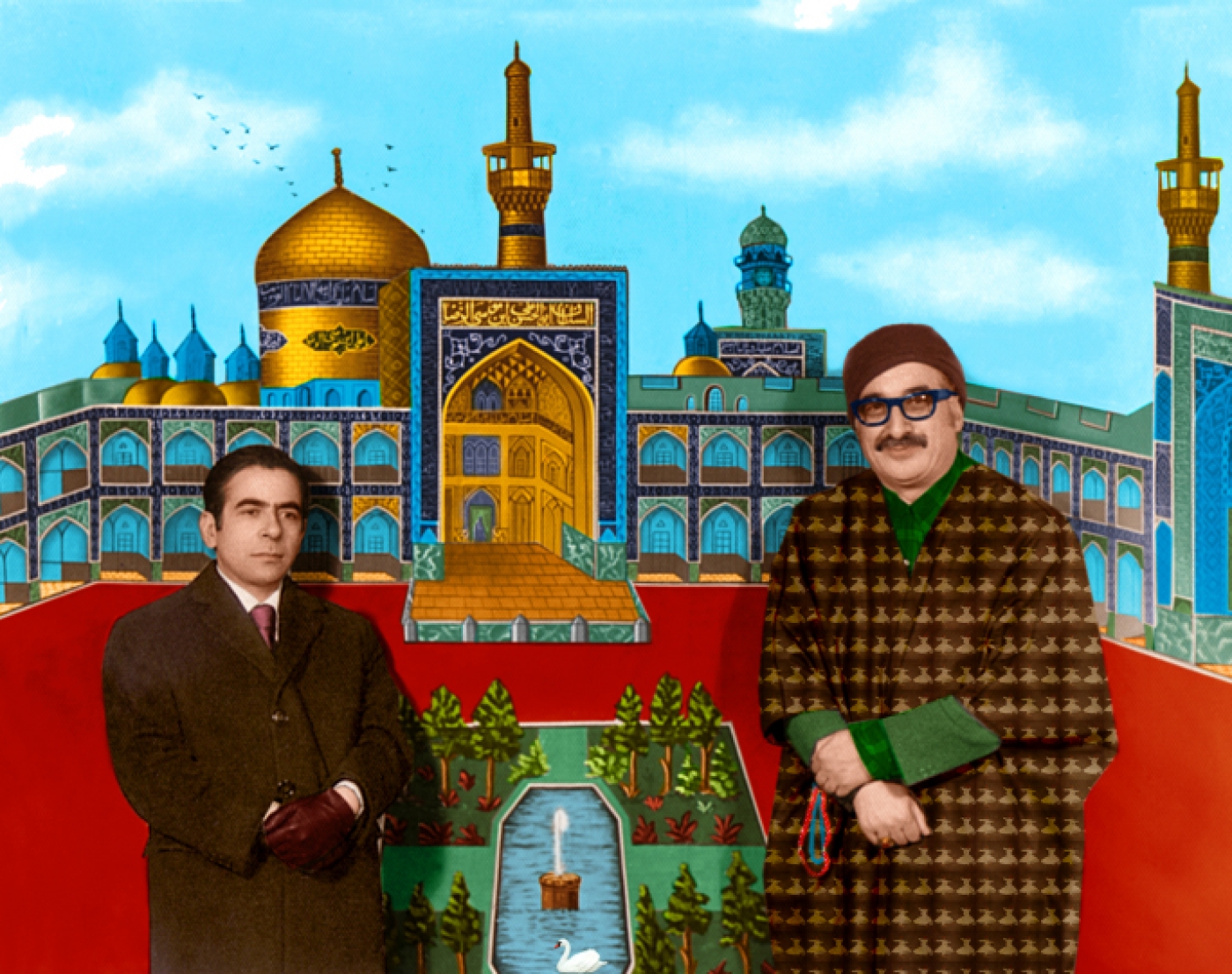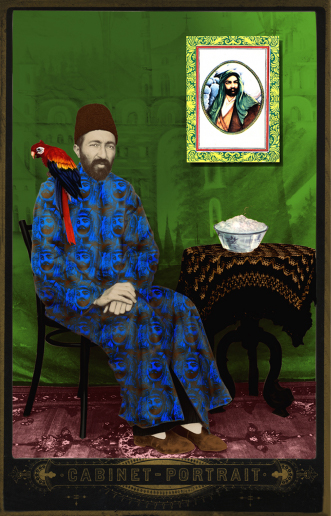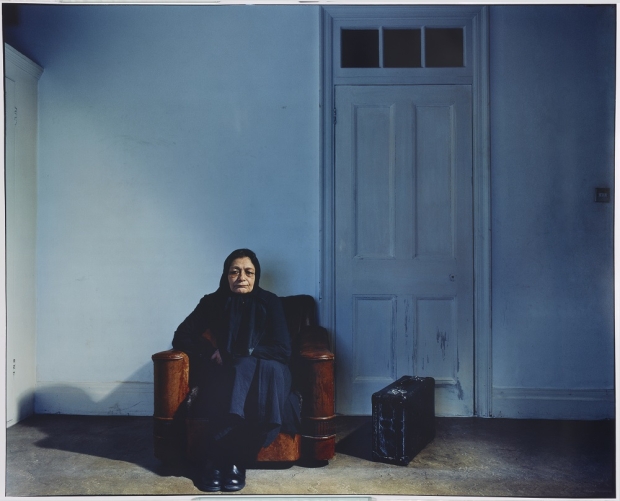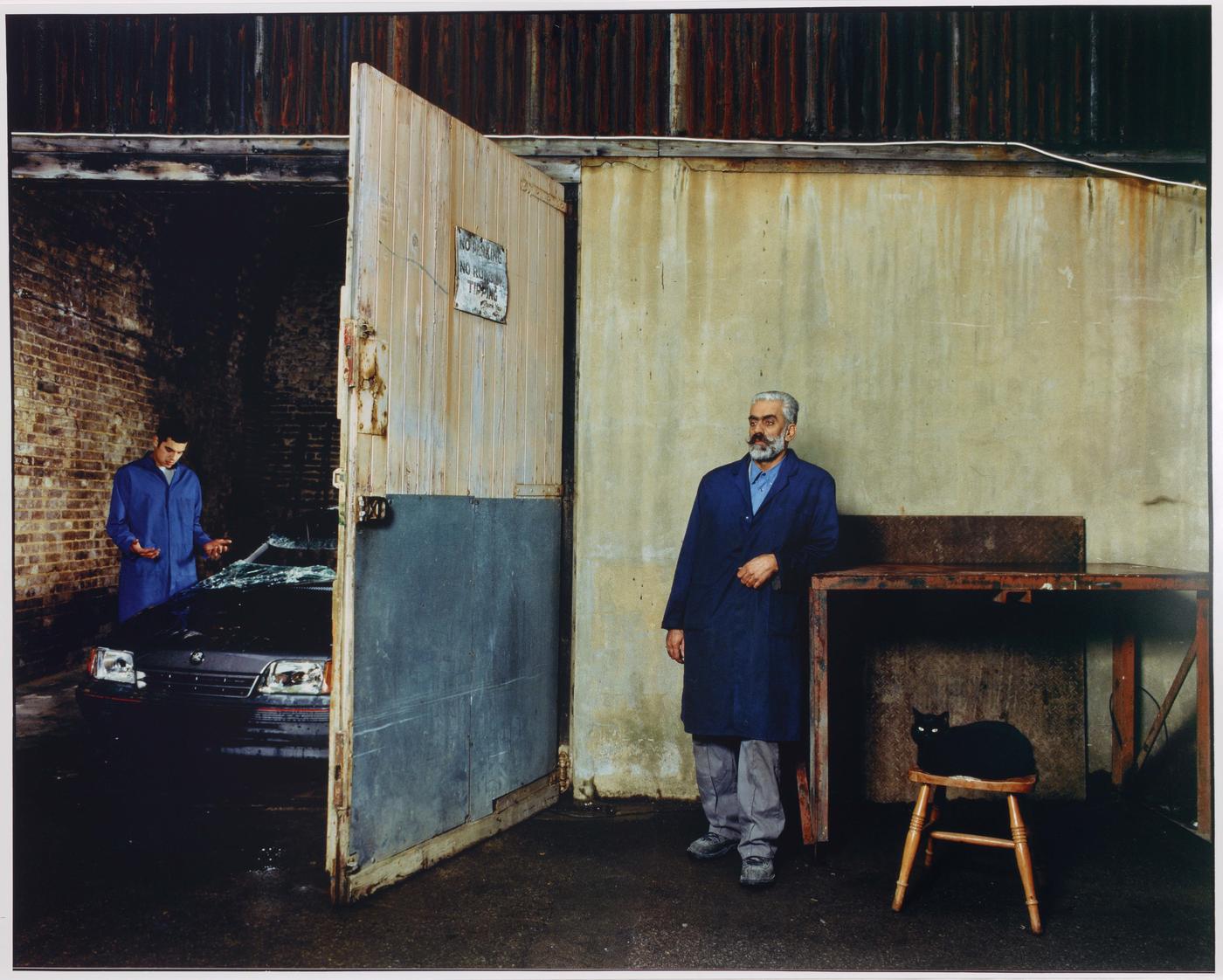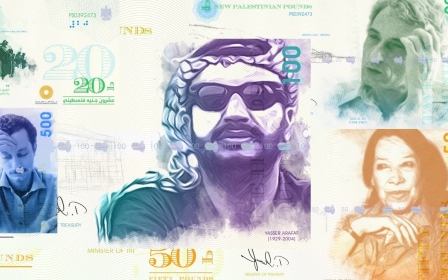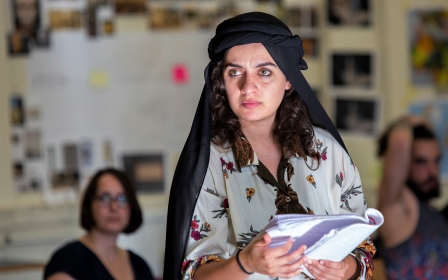'Every Iran is different': The female photographers seeing their country with fresh eyes

For Malekeh Nayiny, Iran is a distant memory.
It has been 18 years since she last visited the place where she was born and raised, the place where she no longer has a home or any family or friends.
"As the time passed, I lost my parents, I lost my home there," Nayiny tells Middle East Eye in a phone interview from Paris, where she has lived since 1989.
"I don't have any more roots there, so I cannot say that I feel very much at home in Iran now."
New MEE newsletter: Jerusalem Dispatch
Sign up to get the latest insights and analysis on Israel-Palestine, alongside Turkey Unpacked and other MEE newsletters
Nayiny, now 64, left Iran at the age of 16 to go to school in the United Kingdom. She then moved to the United States to pursue a bachelor's degree. When she wanted to return to Iran in the 1980s, the revolution had taken place, and Nayiny's parents told her not to go back to the country.
Torn from her ancestral roots, she used art as a medium to confront that feeling. In a series titled, Updating a Family Album, she took old family photos and reinvented them using different backgrounds.
Her series is featured in an exhibition at the Arthur M Sackler Gallery, a Washington DC museum that is part of the Smithsonian Institution and showcases artwork from across Asia.
"I found these photos up in the attic and so I decided to work on them and to reinvent them in a way so that I could connect to the past and my ancestors and the people I haven't even met," Nayiny says.
Using Photoshop, the Iranian artist took the photos and placed the various members of her family up against completely new backgrounds - and in some cases, in new clothes.
Nayiny says the main point behind the changes she made was to showcase the idea of change.
"That was basically the idea: to revive the past," she says.
Nayiny said the series allowed her to take her family out of their original context, to highlight her sense of loss.
"There is always this feeling of not belonging anywhere that comes back to me," she says.
"Even with what's happening in Iran, I don't feel I belong there. My definition of Iran is my past memories."
Six women
Nayiny isn't the only Iranian artist struggling to reconcile with what Iran - and being Iranian - means in contemporary times.
Her series is also featured in a special exhibition in the US capital, "My Iran: Six Women Photographers", which delves into that complicated question, challenging stereotypes by showcasing the country through the eyes of some of its most talented female photographers.
"Iran and its people have become wrongly dehumanised," Massumeh Farhad, the gallery's chief curator for Islamic arts, tells MEE in an interview during a tour of the exhibit.
"There are many factors involved, but I think what is important for us is to break away from some of the stereotypes and humanise.
"These men and women are struggling with some of the same issues that we are struggling [with] here. They also have an artistic vision," Farhad adds.
Alongside Nayiny's series, the exhibition also includes artwork by Newsha Tavakolian, Gohar Dashti, Shadi Ghadirian, Hengameh Golestan and Mitra Tabrizian.
Half of the artists are based in Iran, while the others live abroad.
Farhad said the exhibition explores the complexities of Iranian life both inside and outside the country, with each artist showcasing her own take on what Iranian society means to her.
The photographs provide a glimpse of "the artistic creativity that is right now in many ways flourishing in Iran and outside", the museum curator says.
Almost all of the works on display come from the Sackler's permanent collection, and most were acquired in a 2011 push to obtain artwork from contemporary Iranian photographers.
Walking into the exhibit, visitors are met with a striking and almost motionless, five-and-a-half minute video by Tavakolian, the youngest among the six artists featured in "My Iran".
In Somayeh, a woman donning a strikingly colourful outfit - maroon coat, pine green-coloured scarf, blue jeans and umber brown boots - poses in front of a barren tree with plastic bags where its leaves should be.
The camera zooms in as the wind rustles the plastic bags and her scarf. But the woman's face remains still and firm, keeping her emotions in check.
The video is part of a series titled, Blank Pages of an Iranian Photo Album, a collection of mainly photographs that tell the story of a divorced schoolteacher who gets a fresh start in life - but in a new world filled with new freedoms.
"They're inspired by life, but they sort of move beyond," Farhad says of the photos.
The photographs are arranged in an accordion-style family photo album to highlight the changes in the life of a woman going through a divorce. One of the photos depicts Iranian women singing while another shows an Iranian man wearing a tie.
The sale of neckties was banned after the Islamic Revolution. However, the ban has not always been enforced and men can be seen wearing ties in public.
Women singing is also restricted, yet those restrictions have gone through numerous changes and women can be seen performing in certain settings.
While Tavakolian's works in the exhibit are staged photographs, their similarity to documentary photography stems from her roots as a photojournalist.
She shifted into a more creative form of photography after the Iranian government denied her application for a press permit this year. The Iranian authorities issue such denials as part of their censorship of the media, press freedom groups have reported.
Blending postcard art
Similar to Nayiny's work, Tehran-based Ghadirian sought to capture the push and pull of tradition and modernity in Iranian society through juxtaposition.
Ghadirian's series features portraits taken in a style that was popularised during the Qajar dynasty (1789-1925), but it offers a modern twist.
Each photo contains an item from modern times - a can of Pepsi, for example - while the subjects are dressed in clothing that dates back hundreds of years.
The series portrays Iranian society and culture as one that is not cut off from its tradition, but is constantly taking from its past to propel it into the future.
Farhad says many of the artists are connected to their past, and are using artwork to update Iranian imagery in their own ways.
Another theme that runs from Nayiny's series through the rest of the show is the impact of migration and displacement.
Dashti's photographs centre around her experiences growing up near the Gulf coast during the Iran-Iraq war in the 1980s.
Her Untitled, Iran series counts two photos: one depicts a group of grieving women, dressed all in black, sitting on a couch, and the other shows around 20 men and women with suitcases, lined up in a queue.
However, instead of being in an airport or someone's home, the people in both images are posed in a dry grassland, surrounded by green vegetation and a small hill.
During the tour, Farhad calls it the "middle of nowhere" - a metaphor for what she believes is the future of the her country.
Tabrizian, who is based in London and spends her time photographing Iranian exiles in the city, applied the same concept to her own surroundings.
In "A Deadly Affair", an Iranian mechanic and former soldier in London stares into the distance, not paying attention to his surroundings. On the other side of a garage door, a man stands in disbelief, his hands stretched out, as he assesses the damage to a car.
The images have a cinematic look to them, and indeed Tabrizian is a filmmaker.
"It's very difficult for me to be in exile. Somehow I just have a hard time integrating myself in a different culture and different places," Nayiny says, echoing a theme in Tabrizian's work.
Farhad says she did not set out to showcase the works of artists living both inside and outside of Iran. But their different geographic locations have helped give a more complete view of the Iranian community.
"Ultimately the title of this exhibit is 'My Iran'. What is that? It's a physical place but more than that it's a conceptual place," Farhad says. "There is more than one Iran, hence the title... Every Iran is different."
My Iran: Six Women Photographers is on display until 9 February 2020 at the Arthur M Sackler Gallery in Washington DC.
Middle East Eye delivers independent and unrivalled coverage and analysis of the Middle East, North Africa and beyond. To learn more about republishing this content and the associated fees, please fill out this form. More about MEE can be found here.


